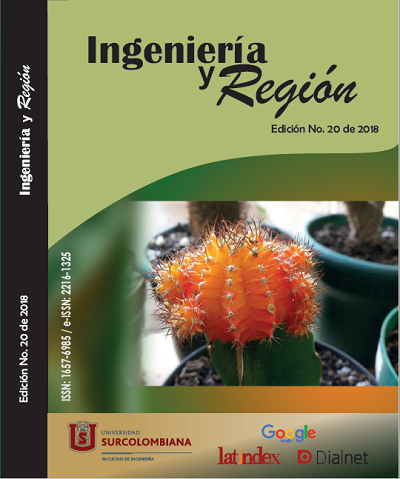Initial development of cassava plants in a minimum cultivation system and conventional preparation with different masses of vegetal cover
##plugins.themes.bootstrap3.article.main##
The sandy soils with cassava cultivation in conventional tillage system undergo intense revolving, which can lead to soil destruction and densification. The soil of northwestern Paraná originates from Caiuá Sandstone. Its texture has a sand content ranging from 85% to 90%, with low levels of phosphorus, potassium, calcium, magnesium and low organic matter content, generally with high susceptibility to erosion.
The experiment was carried out at the Sandstone Campus, Maringá State University, in Cidade Gaúcha. Cassava Fécula Branca variety was used in conventional preparation and minimum cultivation, with four compositions of vegetable toppings: common black oat with crotalaria juncea (AvC); common black oats with common millet (AvM), common black oats with crotalaria juncea and common millet (AvCM) and common black oats (Av). The initial development of cassava plants and dry matter of the cover crops were influenced by the tillage systems. The minimum cultivation presented lower values of stem diameter, plant height and sprouting. While the conventional tillage presented smaller number of plants and larger spacing between plants in plots under black oats in succession of crotalaria juncea with millet and plots only with black oats. The black oats succession with crotalaria juncea under minimum cultivation and black oats succession with crotalaria juncea and common millet under conventional preparation presented the highest values of dry mass.
Downloads
##plugins.themes.bootstrap3.article.details##
Carlos, J. A. D., COSTA, J. A.; COSTA, M. B. Adubação Verde: do conceito à prática. Piracicaba: ESALQ/DIBD. 2006. 32p. (Série Produtor Rural, 30).
Irolivea, E. A. M., Câmara, G. M. S., Nogueira, M. C. S., Cintra, H. S., 1998. Efeito do espaçamento entre plantas e da arquitetura varietal no comportamento vegetativo e produtivo da mandioca. Piracicaba: Scientia Agrícola, v.55, n.2, p. 269-27
Fialho, J. F., Vieira, E. A., 2011. Seleção participativa de variedades de mandioca na agricultura familiar. Planaltina: Embrapa Cerrados, 76 p
Lopes, R. A. P., Milani, J. L. B., Skaraboto, F. F., Dorne, E. O., Lozano, C. S., Silva, D. R., 2015. Altura de plantas, produtividade e teor de amido de mandioca com diferentes manejos e hastes sulcadoras. In: XVI Congresso Brasileiro de Mandioca/ I Congresso Latino-Americano e Caribenho de Mandioca, 2015, Foz do Iguaçu. Anais... Foz do Iguaçu: CERAT/UNESP
Oliveira, E., Medeiros, G. B., Marun, F., Oliveira, J. C., SÁ, J. P. G., Filho, A. C., Kranz, W. M., Silva J. R. N. F., Abrahão, J. J. S., Guerini, V. L., Martin, G. L., 2000. Recuperação de pastagens no Noroeste do Paraná: bases para plantio direto e integração lavoura pecuária. Londrina: IAPAR, 2000, 96p. (Informe de Pesquisa, 134).
Valle, T. L., Feltran, J. C., Carvalho, C. R. L., 2008. Mandioca para produção de etanol. Campinas: Portal Instituto Agronômico, 16p


















